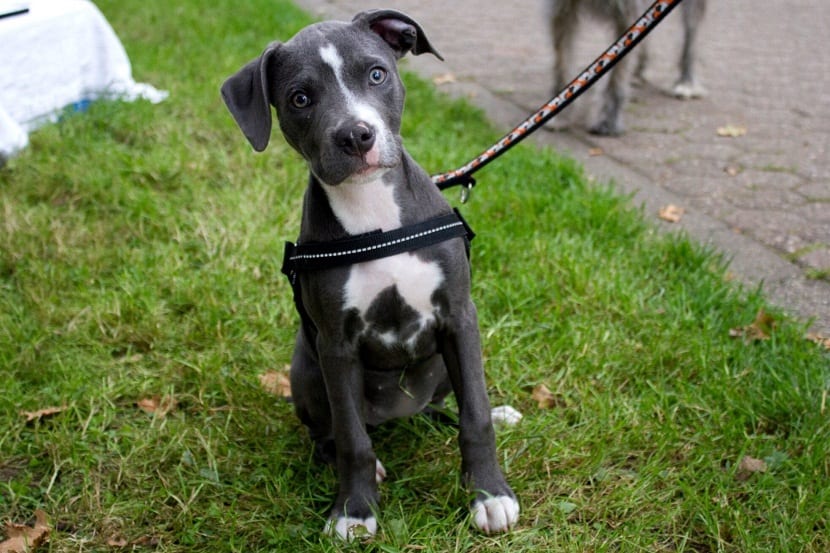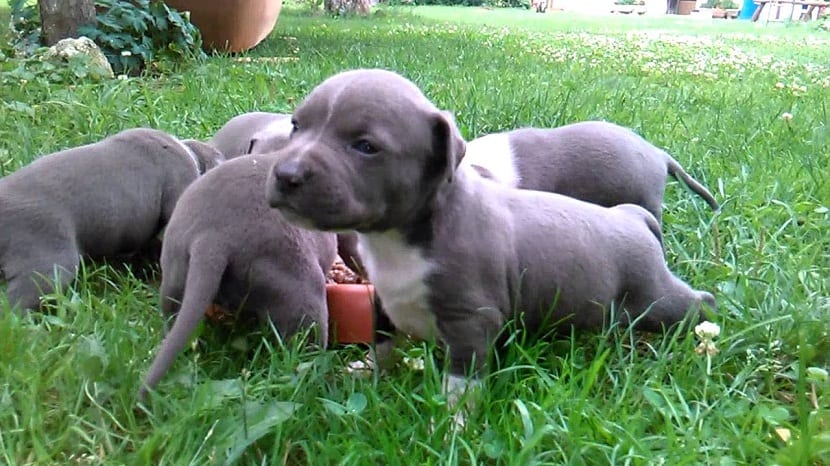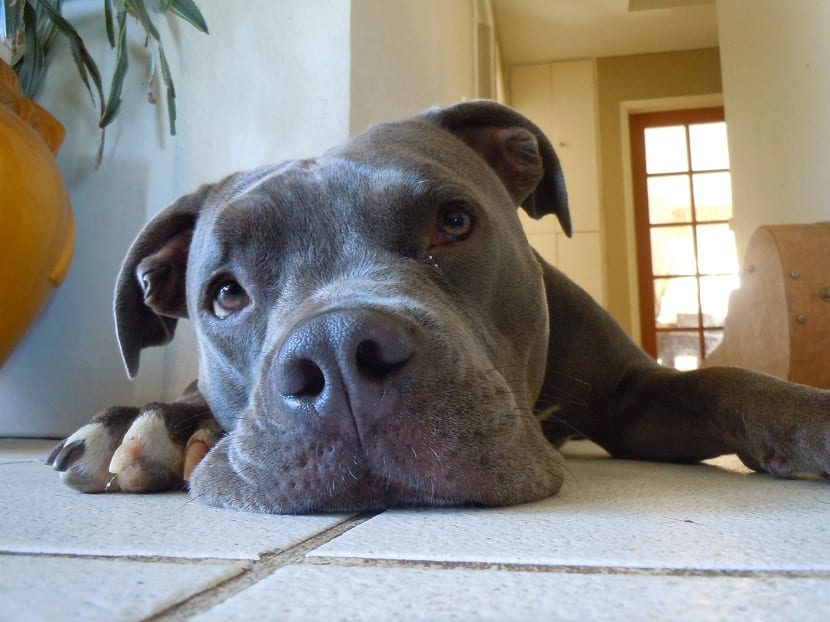
If you want to know more about the American Stanford Blue, you should know that with the passage of time and modern knowledge many professional breeders researched to define each breed with their respective varieties. The first breed to be admitted with its characteristics by the Kennel Club, recognized world authority on dogs, was the American Staffordshire Terrier.
However, despite its beginnings, today the name of this breed is given to many of its equally imposing varieties but of different origins. It has also been confused with its English relative, due to their common characteristics and the history they share.
Origins

One of the most beautiful varieties of the American Staffordshire Terrier is the American Stanford Blue. This pet has won the hearts of many while remaining tenacious and determined. It owes its name to the color of the pupil and the mantle, the product of the mutation of a recessive gene.
With regard to this pet, it is important to clarify that the American Stanford Blue is a rare variety of the American Staffordshire terrier. This breed has similar characteristics to this and the Pitbull, however it is not the same breed.
They shared similar tasks, including herding and dog fighting, which is why they developed incredible strength and protective instincts. They are originally from a mining region in England called Stanford.
To correctly follow the race lineage it is important to carry out the following explanation:
There is race first American Pitbull terrier or APBT, officially recognized and originally from England. Within this breed some varieties stand out such as the Blue nose pitbull, Red nose pitbull and finally, the Pitbull dog breeds, among which are the American Staffordshire terrier and its American Stanford Blue variety.
The American Staffordshire Terrier is a descendant of the Staffordshire Bull Terrier who came to America thanks to the English settlers.
With them also came a variety called Blue paul terrier, which is currently extinct, but is known to have had a bluish-gray mantle. All these races and varieties were popularly called Pitbull.
The crosses they made were not intended to seek standards of beauty, but of strength to be used in fights or as guardians. Once this questionable practice is prohibited, there was great confusion as to the names of the breed and its varieties are concerned.
It is for the year 1921 that Dunable founded in Kansas the American Bull Terrier Club and sets the current breed standard for the American Staffordshire Terrier. By 1936 it was established that this breed was related to the American Bull Terrier.
It is a separate breed that has its origin book since 1974, registering it with this name and being the American Stanford Blue a recognized variety of the breed.
Characteristics of the American Stanford Blue

The appearance and physical characteristics of American Stanford Blue are like any AMSTAFF.
Of course the main difference lies in the characteristic coat color, the eyes, the nose and the blue-gray pads, this being a color that is due to a homozygous recessive gene.
For the condition to occur in both parents, they must have the recessive gene. Having explained this, it is understood that the parents are not necessarily American Stanford Blue.
This gene affects pigmentation through eumelanin. It should also be noted that the chances of this happening are very low under responsible conditions, hence how precious these pets are due to their genetic rarity.
The height at the withers of these pets is approximately 45 to 48 cm. Females can weigh around 20-30 kilos and males between 25 and 35 kilos. The head is medium in size with a pronounced forehead.
The ears are semi-erect. The body is strong and muscular like the bones and the tail is set low.
With regard to temperament, education and breeding have a lot of influence. It is well known that many think they are aggressive due to their past, where they used them to fight, that is why it is necessary to educate them well to get their affectionate and overprotective character.
They have a lot of energy, so to ensure their emotional balance they must exercise regularly. They are quite territorial, so they must be educated from a young age to accept coexistence with other races.
Health and care

The life expectancy of these dogs does not usually exceed seven years. Like all pets, they require visits to the vet and the administration of their vaccines and dewormers in the required time.
Ear infections should be avoided, so hygiene in this area must be taken care of and you even have to clean their teeth frequently.
Diseases in which special attention must be paid are those of cardiac origin and hip dysplasia. They are also known for presenting disorders in the reproductive system, a condition for which many owners prefer to castrate them.
It is necessary to provide them with an adequate diet to avoid obesity, since in this breed it is counterproductive. You should always take into account all the recommended skin care and always use breed-specific products. They should not bathe more than once a month.
Another important aspect is to provide them with physical activity, since they are dogs with a lot of energy. It is recommended that they perform agility and weight exercises and have a space to run. To ensure a balanced character, it is necessary to educate them with positive reinforcement and good treatment.
The American Stanford Blue is a very striking and popular breed. This means that buyers must take special care when acquiring a calf, since the lack of scruples can lead to crosses that generate serious health problems.
That is why the recommendation is acquire this breed from proven ethics breeders, in order to guarantee the good condition of the dog.
Despite the fact that education is very important, it does not go unnoticed that this dog is strong, so it can represent some danger, that is why in some countries such as Spain a license is required to keep them as pets.
This breed does not require more care than is normally offered to a pet, but it does require space, so they are not breeds to breed in urban environments.
If you liked it and want to know more about this and other breeds of dogs, follow us!